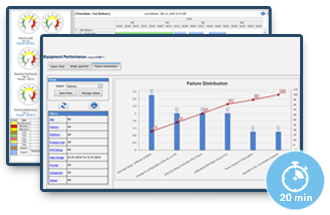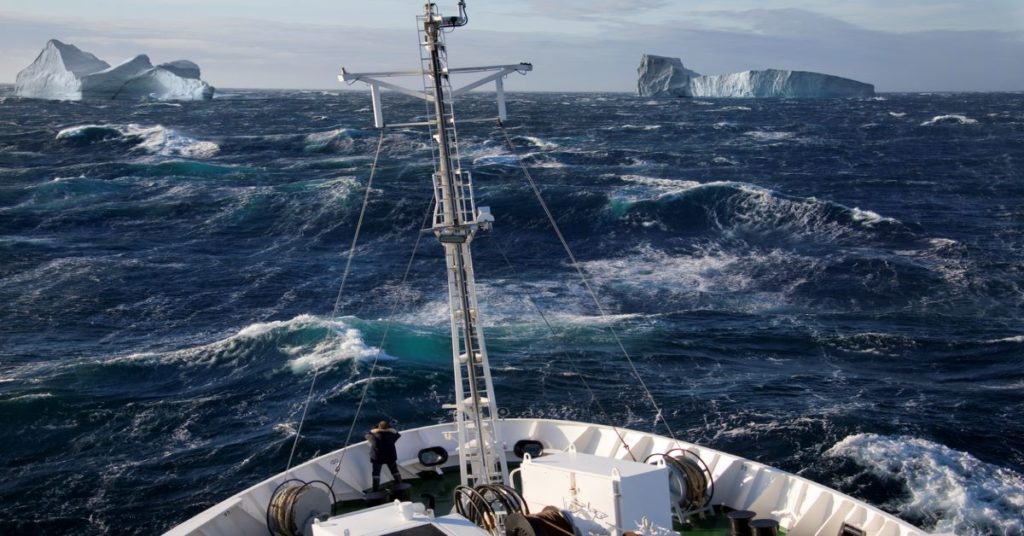

Speed is the key to competitive advantage and speed is not possible without visibility to obstacles – but it is only an advantage if you can see things your competitors can’t and then know what to do about them. Seeing less known but nonetheless serious obstacles require technology and competence. Without them, you can’t go fast. Trying to go fast without visibility risks danger. If you’ve ever been cruising down the highway in traffic, surrounded by other automobiles when the skies opened and you couldn’t find the rental car’s windshield wiper control you’ll know what I mean.
You Need Visibility That Let’s You See and Go Where Your Competitors Can’t
Everyone notices what is obvious and common, the old-fashioned visibility you get from physical contact with humans or assets, or things we measure and report every day on dashboards (assuming the data is accurate). In this new world, that kind of visibility is a hard restriction to speed and cost performance because it won’t enable users to see imminent dangers to their project or production until it’s too late.
Visibility is only a Competitive Advantage if You Know What to do With it
Humans use tools to increase their visibility where, because of size, scope, speed, physical barriers, or complexity, the human brain would be unable to distinguish. Its why in other professions they use sonar, radar, and MRI technology. Those technologies enable their practitioners to observe phenomena that otherwise would be invisible but no less dangerous. The new technologies can be significant competitive advantages like sonar and radar were to defending a greatly outnumbered British force during the Battle of Britain. They saved the country.
Visibility in Asset Management – Even the Common can be Uncommon
In “Asset Management Best Practices: Navigating Covid-19” we write about the importance of data accuracy and completeness for making better assessments and ultimately for being able to virtualize many asset management processes that otherwise require physical presence to “put eyes on assets.” Getting ready and assembling all of the test assets required to perform a test on a jet engine requires you have all the assets you need, they are appropriately calibrated or maintained, they have all the correct capabilities, e.g. the correct electric and mechanical interfaces that enable assets to work as part of the whole “system,” and that the assets you plan on using remain available for use – versus “disappearing” through midnight acquisition or being prioritized away from your project. Lack of data accuracy and completeness requires heroic effort, as Dilbert knows, and the end result is usually higher costs and slower processes.

What Needs to be Visual to Virtualize:
Most of these should be obvious and commonly understood requirements.
- Assets, their detailed capabilities, and maintenance/calibration requirements
- Asset utilization, demands, and capacity gaps
- Asset users, their skills, demand and capacity gaps
- Facilities utilization, demands, and capacity gaps
- Service organization capabilities, demand, and capacity gaps
- Demand drivers, like productions or project schedules
Their accuracy is almost always in question because 1) people try to game the system to their own advantage (e.g. hoarding assets or taking them through midnight acquisition), 2) the above information can only be derived indirectly using data from multiple different systems (e.g. some data is in an asset system, others might be in project systems), 3) data is not commonly available in systems (e.g. detailed capabilities) or 4).
In addition to the above list, the following behaviors must be able to be made visible through analytics because they greatly affect available capacity and costs.
- Hoarding of Assets/Equipment
- Asset location “drift” caused by assets moving outside agreed to processes
- Hoarding of Services
- Hoarding of Schedules
One Version of the Truth
In asset-intensive operations, the processes for planning, acquiring, use/sharing, and disposal cross many different organizational boundaries. This requires asset management to be a “team sport” if it’s going to be a competitive differentiator because all of these team members must be impeccably coordinated. When they share and act from one version of the truth they build trust with each other and become part of a resilient network of capabilities able to respond quickly to changing requirements. Everything listed above that needs to be visual also needs to be true. In this process, organizational silos are broken down and individuals collaborate across departments aimed at important outcomes of cost, speed, and innovation being demanded by competitive necessity. One version of the truth is killed by:
- Spreadsheets
- Bulletin boards
- Whiteboard schedules
- One-off systems, homegrown or not
Safer and Better Results
From a Covid-19 safety and social distancing perspective walking around to “put eyes on assets” and the use of bulletin boards and whiteboards are problematic but they are also costly to the “one version of the truth” requirement for speed and efficiency in rapidly changing environments. With Sente’s new approach to asset management, called Accelerated Enterprise Asset Management, waste is eliminated by breaking down the data, software application, and organizational barriers. we call this “Working Together, Better” and it produced breakthrough results beyond any ever produced with common asset management approaches.
- 2X increases to throughput
- 4X increases to utilization
- 50% less support costs
- 50% less equipment required
- Database accuracy from 70% or lower to 96% and higher depending on the function
- Resources and Capital freed up for innovation and growth
Working Together, Better…Right Technology, Right Skills, Right Outcomes
Technology:
Common or typical asset management solutions are too simplistic, without necessary capability, and focused on compliance more than producing competitive advantage; ERP is too complicated, rigid, unusable, and often encumbered by necessarily slow and burdensome governance. None of the solutions are integrated. Accelerated Enterprise Asset Management integrates all the necessary software components that enable users to get their jobs done so they are incented to keep their data accurate and complete and together produce “one version of the truth.”
Skills:
Many studies point to culture as the biggest obstacle to effective digitization. This is more than most leaders want to take on with their asset management project. We work with teams on how to operate our software as all asset management companies do, but we go beyond operating instructions to helping teams use the software strategically to produce competitive advantages helping their company succeed and creating the space for them to succeed as well. We call this S.E.A.L. Training.
Outcomes:
We focus all of our users on producing fundamental competitive advantages for their internal and external customers.
- Increase Speed
- Increase Capability
- Reduce Costly Complexity and Costs
Request a Demo

See how Scireo aEAM Software drops asset and support costs by 50% while accelerating time-to-market 2X.
Relevant Content
Virtualizing aEAM Feasibility, Planning & Install: Faster, Lower Cost, Accelerated Results
aEAM (Accelerated Enterprise Asset Management) achieves 2X to 4X improvements to asset utilization, throughput, and speed compared with typical asset management solutions. You can now launch twice as fast getting results in 30 to 60 days! Great projects have great potential and get key constituents on board to drive the change with the knowledge and…
Are Your Metrics Complete? Do They Trigger Effective Behaviors and Results?
Asset Management Metrics are very important to success. I won’t say the most important though, because a number without a narrative that gives it meaning, relevance, and value might as well not exist. It won’t produce any change in direction or focus. If you don’t have a purpose, by definition they aren’t complete They are…
Introducing Accelerated Enterprise Asset Management – aEAM
Asset-Intensive operations have their own set of unique challenges when considering how they will be transformed for speed and cost competitiveness post-Covid-19. aEAM is looking like an answer to CEOs who, emboldened by the initial adoption of collaboration tools made necessary by Covid-19, intend to accelerate broader changes required to drive speed and efficiency into…
Asset Management Best Practices: Navigating Covid-19
We’ve relied very much over the years on informal “water cooler” or “hallway” conversations to get caught up, coordinate, and build background narratives with our colleagues and teams at work; To check progress and see where people need help. These have been habitual practices that make things work but are now severely curtailed. These conversations…
Notable Quotes
“The capacity provided by Sente’s aEAM solution enabled us to move forward with an investment in the customer-based lab. Since then we have more than doubled our market share with this strategic customer.”
Director of Engineering









